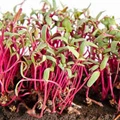
Malabar Tamarind is one of the main ingredients used to bring sour taste to Indian curries. It is widely cultivated in India, mainly in Kerala and Karnataka. Its use is very high in South India. It is known all over India by various local names like Brindleberry, Kodampuli, Kodampului etc.
Its seeds, leaves and shoots are all medicinal. Malabar Tamarind is also used in Ayurvedic medicine and in the manufacture of allopathic medicines. Its skin is rich in starch, protein, minerals and acids. It is gaining acceptance in our country as it can remove excess body fat and reduce body weight. It contains a phytochemical called hydroxycitric acid which eliminates unwanted fat from our body. Let's take a look at the other health aspects of this.
10 Health Benefits of Malabar Tamarind
-
Applying the peel of the root of the Malabar Tamarind is a permanent remedy for skin diseases.
-
For those who suffer from inflammation of the body, it is beneficial to apply a decoction of this leaves
-
Adding Malabar Tamarind to the diet eliminates digestive problems.
-
In Ayurveda, the oil extracted from the seeds of Malabar Tamarind is used for quick healing of wounds.
-
Daily use of Malabar Tamarind is good for diabetics as it lowers blood sugar levels.
-
Malabar Tamarind is an excellent remedy for bleeding and burns.
-
For those who want to reduce obesity, you can get good results by adding a little pepper powder to the infusion of Malabar Tamarind and use it daily.
-
Malabar Tamarind is also best used to get rid of mucus.
-
It is good for bone and dental health as it is rich in calcium.
-
Malabar Tamarind, which is rich in potassium, improves heart health
How to Grow Malabar Tamarind
This is usually done in the months of June-July. Seedling reproduction can be done by collecting seeds from well matured fruits or by budding. Pits of 20 cm length and width can be prepared for planting this seedlings. The pits are then filled with manure or compost and the seedlings are planted. If the seedlings germinate from seeds, they can be transplanted at about three months of age. When planting the seeds, keep a distance of about 7 m.
Malabar Tamarind is a relatively resistant plant. Neem based insecticides are recommended to control the fungal diseases that may be seen in the early stages of the plant. It grows to a height of about 20 m. Its lifespan is estimated at 60 years. Female flowers in clusters of three or four. It flowers before the monsoon. The fruits are green at the beginning but turn yellow when they reach maturity.
There are about six seeds in a pod. When the seeds are removed and the pod is dried, it turns black. This dried Malabar Tamarind is in great demand in the market. Therefore, this cultivation can be started commercially.












